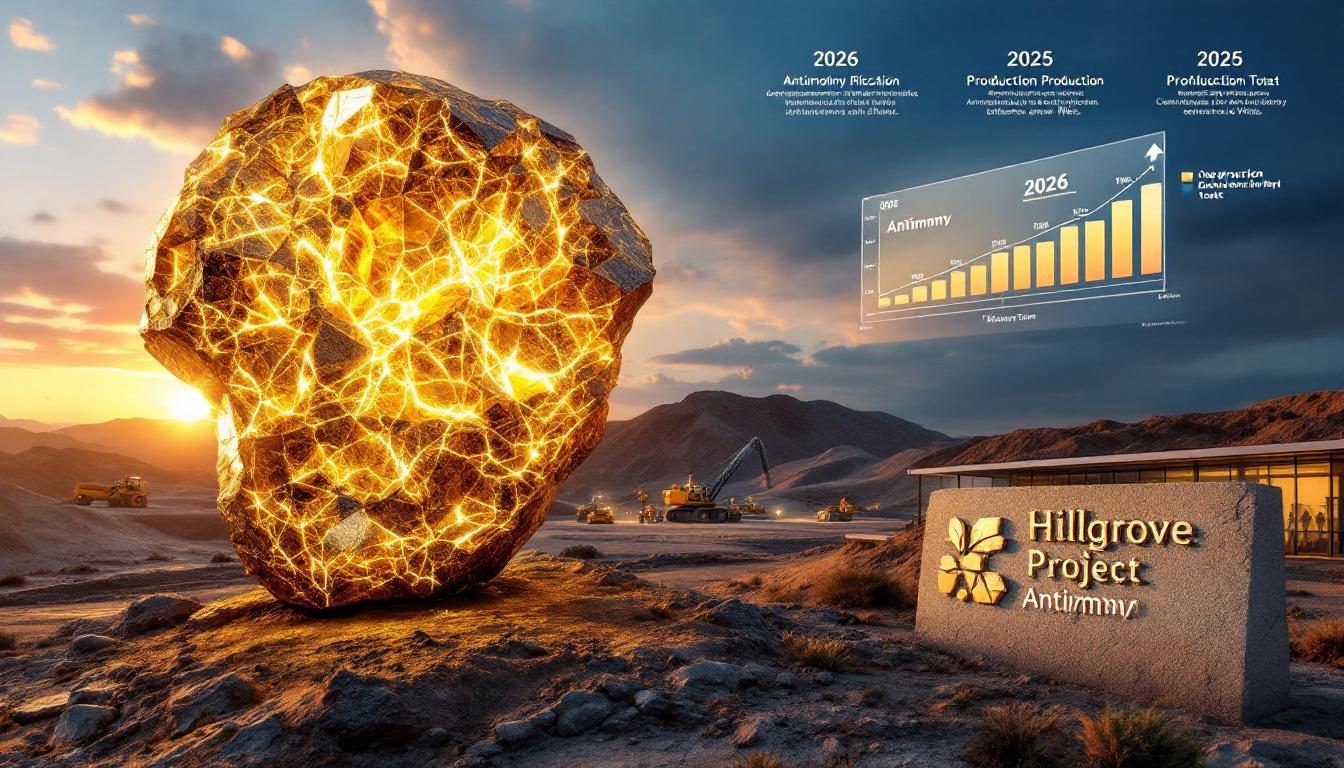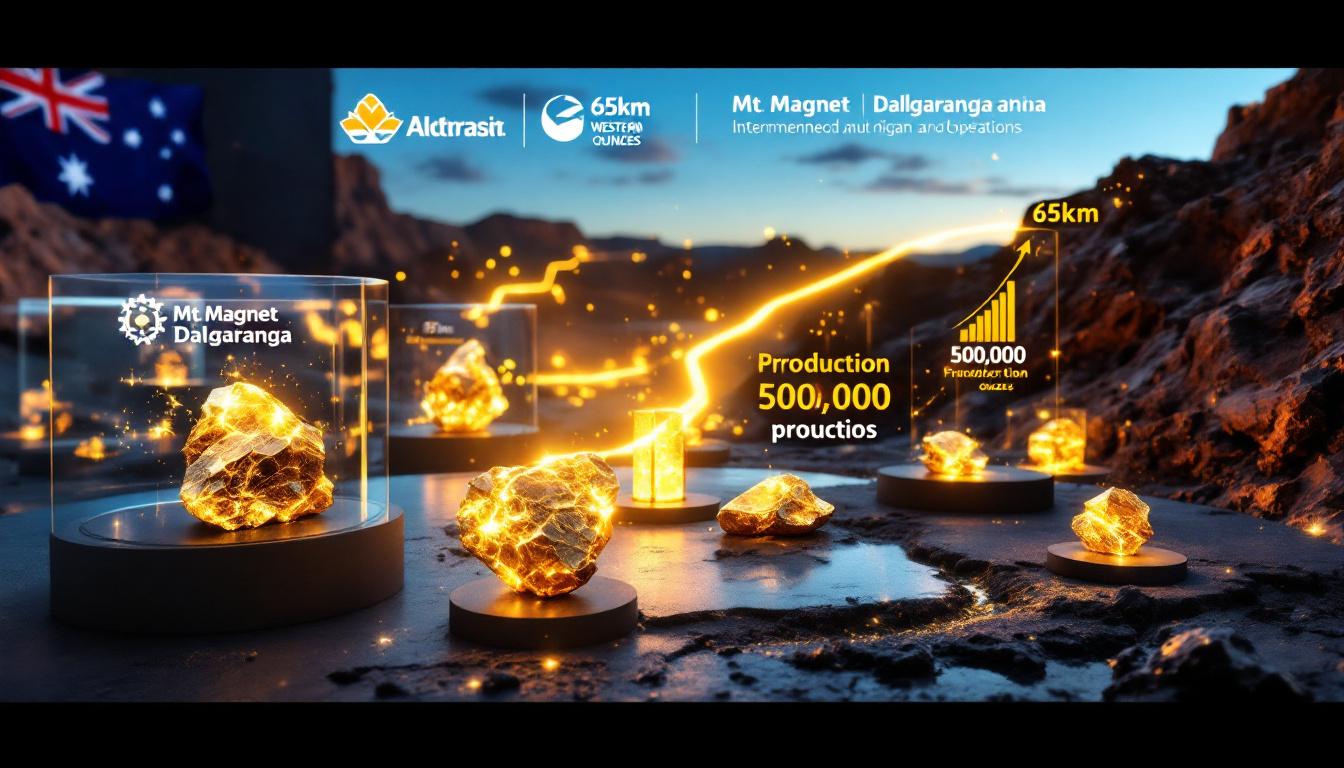What Makes the Trump Administration Different for Mining?
The Trump administration has established itself as perhaps the most mining-friendly administration in White House history. How is the Trump administration impacting mining in America 2025? This focus on deregulation is evident in policy shifts that echo insights from trump’s policies reshaping commodity markets.
Furthermore, there has been a concerted effort to dismantle excessive regulatory barriers that had significantly delayed projects. In addition, policymakers are realigning priorities to support domestic supply chains and foster economic growth through mining.
The contrast with previous administrations is stark. The prior administration implemented 87 executive orders that specifically limited mining activities, with Alaska bearing a disproportionate burden. In response, Trump's approach aims at reducing "red tape and over-regulation" to energise the industry.
Moreover, bipartisan support for domestic mining emphasises national security. A Reuters report highlights the broader international implications of this shift in policy, underscoring a strategic recalibration in the global resource market.
How Are Federal Permitting Processes Changing?
Federal permitting processes remain challenging. However, significant reforms are expected under the new administration. The lengthy procedures under NEPA and ESA are now being reformed to accelerate project timelines without compromising environmental standards.
The new Secretary of Interior, with his deep ties to the natural resource sector, has prioritised streamlining procedures. For instance, industry professionals now refer to insights found in a comprehensive guide to mining permits and tenure.
In addition, efforts to coordinate among the BLM, EPA, Forest Service, and Army Corps of Engineers are underway. This coordinated approach is aimed at eliminating redundancies and providing clearer timeline predictability for project developers.
What Impact Will Tariffs Have on Mining Supply Chains?
Tariffs now play an increasingly complex role in America's mining renaissance. The administration has threatened 25% tariffs on Canadian and Mexican imports. However, these tariffs are currently used as negotiation tools rather than permanent fixtures.
Consequently, tariff policies are being strategically applied against China as part of a broader mineral security strategy. The existing 100% tariff on Chinese vehicles is driving up domestic demand for lithium and battery materials.
Industry analysts suggest that these measures could accelerate reshoring of mineral supply chains. This reshoring encompasses the entire process—from extraction to refining—creating a more integrated and secure domestic framework.
How Are Mining Companies Managing Rising Inflation?
Inflation poses significant challenges for mining companies, as rising input costs for steel, cement, and energy play a crucial role. Companies with high-grade deposits provide the best buffer against these pressures. Consequently, strategic engineering before construction is becoming essential.
For instance, the CK Gold project in Wyoming identified millions of dollars in potential savings through detailed pre-construction engineering. In addition, new technologies like ultra-fine flotation and advanced leaching methods enhance recovery rates despite inflationary pressures.
Sarah Johnson, a respected mining analyst, noted that companies focusing on innovation are better positioned to combat rising costs. She stated, "You can't cut your way to prosperity in this environment." Therefore, innovation remains critical to long-term success.
Why Is America Becoming More Attractive for Mining Investment?
America’s attractiveness for mining investment is rising due to several key factors. The country's strong rule of law and secure property rights stand in stark contrast to the risks of nationalisation in other regions.
Additionally, the nation's exceptional infrastructure reduces development costs significantly. States with strong mining heritages—such as Wyoming, Nevada, Michigan, and Alaska—offer supportive regulatory environments and streamlined permitting processes.
For instance, Wyoming’s permitting process can take less than 24 months, as opposed to some federal timelines that extend beyond a decade. Moreover, national security concerns have elevated the importance of domestically produced minerals. This multifaceted attractiveness fosters a robust and resilient mining investment landscape.
What Critical Minerals Are Most Important for US Supply Chains?
Copper stands at the forefront of America’s critical mineral needs. The electrification and automotive industries are fuelling unprecedented demand for copper, as evidenced by Michigan’s Upper Peninsula resources.
Lithium has also emerged as a cornerstone for battery technology, with Nevada becoming a leading centre of production. Moreover, gold retains its importance as both a monetary hedge and an industrial resource. Domestic projects in Wyoming and Nevada are reaching permitting milestones that were unimaginable a decade ago.
In addition, base metals such as zinc, nickel, and cobalt are increasingly prioritised. Even boron, crucial for advanced glass manufacturing, is being considered a strategic asset. These developments demonstrate how critical minerals influence domestic supply chains and overall market security.
How Are State-Level Mining Policies Evolving?
States like Wyoming and Michigan are leading the way with mining-friendly policies. Wyoming has streamlined its permitting process while directing 2.1% NSR royalties to fund K-12 education. This move also provides direct community benefits.
Michigan, on the other hand, is establishing a robust "pit-to-product" supply chain in its copper industry. These policies result in reduced transportation costs and environmental impacts while providing clear economic benefits. In addition to state initiatives, Nevada is rapidly becoming an attractive hub for lithium development.
Furthermore, Alaska is experiencing a shift towards more accessible mining opportunities. With the lifting of federal restrictions, previously locked resources in copper, gold, and rare earths are now viable for development. However, increased activity requires additional staffing in geological survey departments, as seen in Wyoming’s recent 15% budget hike for surveys.
What Are the Economic Benefits of Domestic Mining?
Domestic mining offers a multitude of economic benefits that extend beyond the mining sites. The CK Gold project in Wyoming, for example, is expected to create approximately 1,500 construction jobs and 350 permanent positions. These high-quality roles greatly enhance rural economies.
Moreover, local supply chains reduce transportation costs and cut environmental footprints. Each mining job often creates 2.5 additional roles in the surrounding economy, providing a strong multiplier effect.
In addition, substantial royalty payments bolster state budgets. Wyoming, facing an $800 million deficit from the coal industry decline, may find relief through these new mining ventures. National security is also enhanced by reducing dependence on foreign suppliers.
How Is M&A Activity Shaping the Mining Sector?
The mining sector is currently undergoing significant consolidation. Single-asset companies are increasingly unappealing to institutional investors, considering the heightened regulatory risks. Consequently, strategic acquisitions are on the rise, with companies seeking diverse project pipelines.
For example, mergers now focus on acquiring synergistic assets with existing mills and processing facilities. This trend has led to higher premiums for companies with established infrastructure. In addition, recent insights from mining and finance industry predictions for 2025 suggest that consolidation is likely to accelerate market growth.
Moreover, geographic focus has shifted towards US and Canadian assets due to their lower geopolitical risk. This approach provides investors with more predictable development timelines and improved access to capital.
What Are the Biggest Challenges Still Facing US Mining?
Despite regulatory improvements, challenges remain. Chief among these is the shortage of domestic refining and smelting capacity, largely a casualty of the 1980s Clean Air and Water Acts. Legal challenges to permits continue to create uncertainty, even after initial regulatory approval.
Environmental groups are increasingly shifting their focus from permitting delays to post-approval litigation. This extension of timelines affects project developers and their financiers alike. Additionally, the "starvation of capital" for junior mining companies remains a persistent issue.
Furthermore, a shortage of skilled mining professionals has emerged after decades of industry contraction. Engineering schools struggle to produce enough graduates, which drives up operating costs. In this context, the new emphasis on strategies for navigating junior mining investments becomes ever more critical.
How Should Investors Approach Mining Stocks in This Environment?
Investors should prioritise companies with fully permitted projects that are nearing production. This approach minimises regulatory risk and ensures accelerated cash flow. In this environment, a well-diversified portfolio is more important than ever.
Investors must consider commodity price leverage since rising prices can yield magnified returns. For example, a 25% increase in copper prices can potentially boost a developer’s net asset value by 300%. Consequently, companies with robust project pipelines are proving resilient in a volatile market.
Moreover, management quality is paramount for investment success. Teams with previous mine-building experience are better equipped to meet budget and timeline targets. In addition, diversification across projects, rather than relying solely on one asset, mitigates risk and adds value.
What's the Future Outlook for Metal Prices?
Metal prices are set for significant appreciation across various commodities. Analysts predict gold could reach between £3,000 and £4,000 per ounce, reflecting both monetary uncertainty and robust industrial demand. Similarly, silver might hit £40-£50 per ounce driven by a combination of industrial and speculative interest.
Copper may need to reach £4-£5 per pound for new projects to become viable. This is particularly important given rising production costs and declining ore grades. Additionally, lithium demand is expected to double in the next 5-6 years due to electric vehicle production expansion.
For further context, an analysis by mining opportunities in 2025 underscores that inflation and supply chain constraints will likely drive metal prices higher. Consequently, mining assets remain robust hedges against inflation.
How Can Mining Companies Better Demonstrate ESG Credentials?
Mining companies are increasingly demonstrating strong environmental, social, and governance (ESG) credentials. By keeping supply chains local—such as Michigan copper feeding into domestic automotive manufacturing—companies reduce transportation emissions and support regional economies.
Modern operations now boast water recycling rates in excess of 90%. Furthermore, initiatives such as Wyoming’s dedication of 2.1% NSR royalties to local education directly benefit communities.
Companies now create high-paying jobs in rural regions, addressing social equity concerns. The average mining job, paying around £70,000-£85,000 per annum, significantly boosts community development.
In addition, domestic production reduces global transportation emissions. This environmental benefit is increasingly recognised by investors and regulators alike. Modern mining operations now align profitability with strong ESG credentials, ensuring long-term sustainability.
In summary, how is the Trump administration impacting mining in America 2025? Through deregulation, enhanced domestic supply chains, and improved permitting processes, the administration is reshaping the future of US mining. Moreover, consistent advances in technology and evolving state policies further enhance industry prospects, indicating a robust and transformative period ahead for the mining sector.
Ready to Stay Ahead of Major Mineral Discoveries?
Gain a competitive edge with Discovery Alert's proprietary Discovery IQ model, delivering instant notifications of significant ASX announcements that could lead to substantial returns. Explore historic examples of exceptional market outcomes by visiting the dedicated discoveries page and start your 30-day free trial to position yourself ahead of the market.




